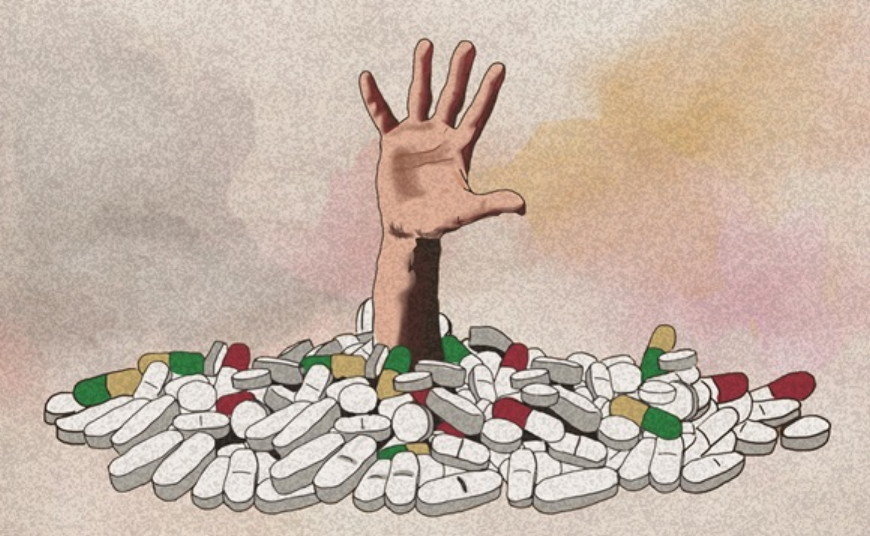While the U.S. leads the world in addiction to prescription opioid painkillers, Australia currently ranks second. The Australian Medical Association recently declared the rising statistics a "national emergency". Nearly all countries have reported an increase of addiction to prescription drugs. According to the Psychology Today, a large percentage of people receiving drug treatment in Europe are addicted to benzodiazepines. This class of prescription drug is commonly used to treat anxiety and includes popular drugs like Xanax.
Alternatives to the Use of Prescription Drugs to Manage Pain and Anxiety
To avoid the added pain of addiction, people are looking for alternative treatments for chronic pain.
Exercise and Meditation
Exercise can reduce pain in a number of ways. It strengthens muscles, increases joint mobility, releases natural pain-killing endorphins, and improves sleep. Relaxation can also be an effective tool in treating both pain and anxiety by decreasing stress and muscle tension. Meditation techniques can also reduce stress and adding yoga can make you stronger and more flexible in the process.
Comment: Learn about the numerous mental, emotional and spiritual health benefits of meditation by visiting the Éiriú Eolas Stress Control, Healing and Rejuvenation Program website, try out the entire program here for free.
- Demystifying meditation - brain imaging illustrates how meditationreduces pain
- Research Says: Meditation can improve heart health, manage stress and relieve pain
- Meditative breathing may help manage chronic pain
- Meditation Better Than Morphine?
- Taking addiction to the mat
- Why Yoga? Healing research
Massage Therapy
Massage therapy has been proven to be hugely beneficial in treating chronic pain, both physical and emotional. There have been multiple studies that concluded massage was superior to relaxation and acupuncture in managing back pain. The benefits of massage are also more long-lasting than other types of treatments, for up to a year past the end of active treatment in some cases. More proof lies in the fact that many insurance companies now cover therapeutic massage.
Massage has proven effective in treating chronic shoulder pain, headaches, fibromyalgia, and carpal tunnel syndrome. It has also been demonstrated to improve grip strength, increase range of motion, and decrease anxiety and depression. Despite its many benefits, many people still aren't able to take advantage of its benefits. The most common reasons are the lack of time and cost. Taking a pill only takes a moment. A therapeutic massage requires travel time in addition to the hour it takes for the massage. Massage usually costs approximately $100 per session.
Massage Chair
One increasingly popular alternative for busy people who want to manage pain or stress and avoid prescription drugs is a massage chair. Utilizing every form of state-of-the-art technology now available, massage chairs have come a long way from the first models. Today's models include a wide range of features such as 16 settings from light massage to deep tissue massage, a heated lumbar and seat region, shiatsu massage for neck and shoulders, and special rollers designed for foot massage. Some even have a full-body stretch feature that helps exercise seldom-used muscle groups.
Massage therapy can literally be a life-saving choice in the treatment of chronic pain. Just as importantly, it can enhance your quality of life by reducing stress, anxiety, and depression while increasing flexibility, mobility, and relaxation. Unlike the epidemic of prescription drug addiction, a global epidemic of relaxation would be a welcome one.
Comment: Learn more about the various types of massage therapy:
The Health and Wellness Show Body Work: The Issues in Your Tissues
Today on the Health and Wellness Show we're looking into the topic of body work. Massage, rolfing, yoga, pilates, lomi lomi, fascia release, chiropractic - there are many different methods and modalities for physically working on our bodies and we'll be discussing many of these. We'll explore the concepts behind the work of Peter Levine, Alexander Lowen and others who look into the connection between emotions and trauma being "stored" in the tissues, how one's posture reflects one's internal state and how working on the body can benefit us physically, psychologically and emotionally.




Comment: The New Epidemic Sweeping Across America (and it's Not a Disease)